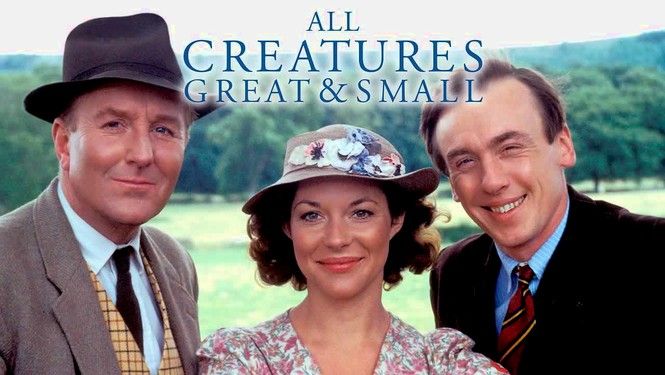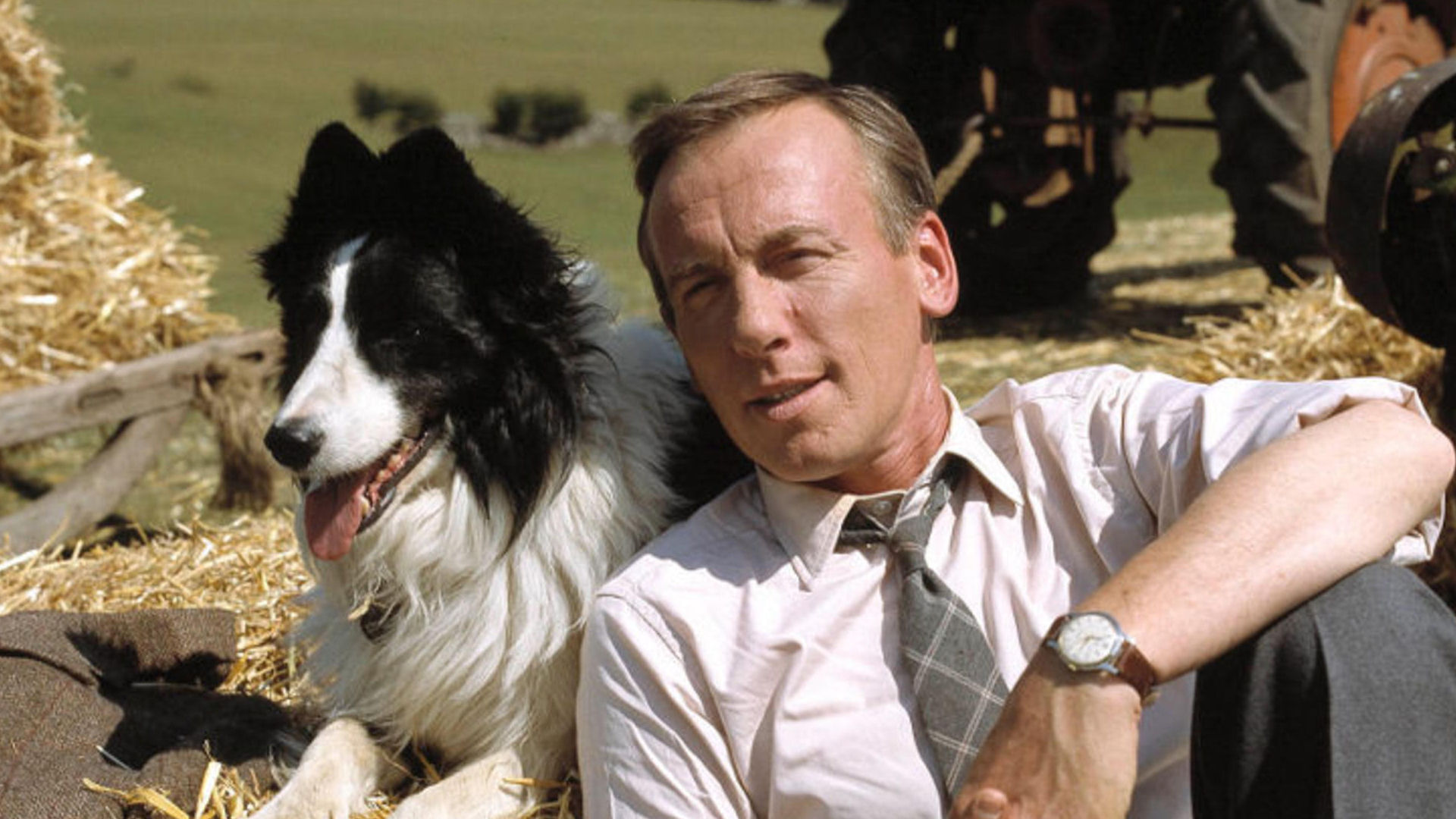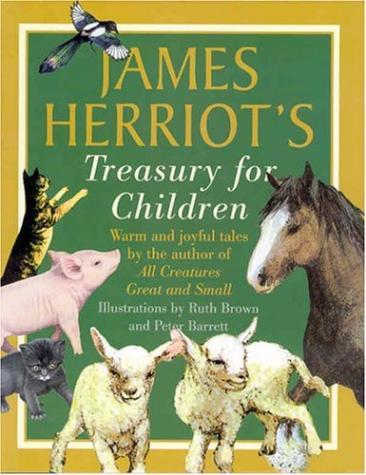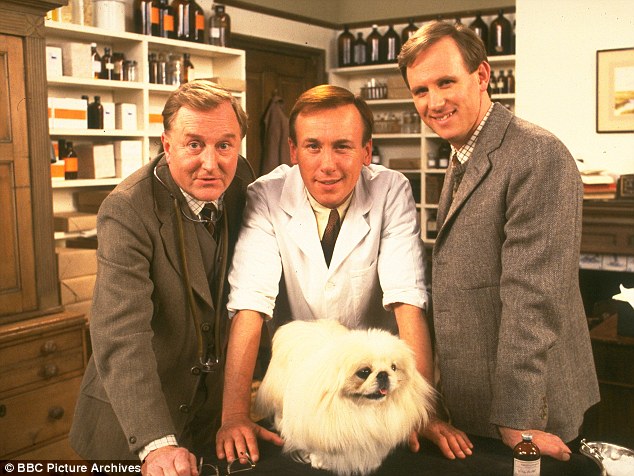
“I, like countless of his readers, found the humour that runs through the stories to be one of James Herriot’s most appealing qualities. He himself had an acute sense of humour— an ability always to see the funny side of things— and it shows in his writing.” – Jim Wight of his father, Alf Wight “Jim Herriot”
Many years ago, in his incredible home library, my grandfather suggested that I read Jim Herriot’s famous All Creatures series. I was in seventh or eighth grade and had not yet learned some essential truths about myself. I did not know that I was a reader. I did not know that I would soon fall madly in love with all things British. I did not know that my grandfather was incapable of missing the mark on book recommendations. I was 12, moody, insecure,and had little reading stamina.
The slender spine chronicling the misadventures of a country vet and his wacky but endearing partners was just a bit too much text, too foreign, and too out of my vernacular for me to embrace. I missed an opportunity to meet Jim Herriot and, in so doing, understand my grandfather better. God is merciful and He gave me another chance much later down the road. And now, I want to help others not make the mistake I made.
Alf Wight was a country vet in a post-industrial revolution era. When he arrived on the veterinary scene, he was really forced to straddle the line between the old and the new. For hundreds of years, veterinary medicine had made slow progress, maintaining traditional treatments and practices. Wight entered when all of that was changing. Medicinal and diagnostic options were invading the pastoral scene, and both veterinary medicine and country farming were fundamentally changing. Like Ralph Moody, who wanted to capture the Wild West before it was completely gone, Wight wanted to capture the old ways and their transition into the new ways before all of it was replaced with machines. Like Moody, Wight’s affection for the old ways and the farmers who relied upon them provided so much warmth to his story telling. Wight was also a brilliant student of human nature, and could compose stories that revealed that nature in ways that endear the characters to us and delighted our imaginations.
The first book in the series, All Creatures Great and Small, opens with Dr. Herriot trying to pull a dying calf out of an exhausted cow. The scene opens with an emergency in progress and the reader is tempted to wonder if they have grabbed the wrong volume and started, by mistake, somewhere in the middle. Rest assured, this is just setting of the stage. We quickly learn that Herriot is a new vet and this case is the perfect way to introduce all that we need to know about the series: that this work is brutally hard, that the people involved are complex, that we are going to read something akin to a journal of a new vet and that, despite the hardness of it, it is going to be very funny.
Wight adopts the voice of Herriot throughout the series and we are tempted to believe that these are Wight’s personal journals. They are not. They are, however, stories born out of Wight’s personal experience. Art imitates life and so much of these stories are based on Wight’s life, but they are not strictly autobiographical. That does not make them any less authentic, however. More importantly, they are wonderful storytelling and they do brilliantly capture a very real moment in history.

These stories were written for adults. As such, there are references to the vets drinking, smoking, dancing, and entertaining ladies. Perfectly English, however, it is all pretty buttoned up and family friendly. Wight’s animal vignettes are so beautiful that his editors extracted a dozen of the best and commissioned two illustrators to bring a Children’s Treasury to life. (We will have a review of that soon.) This is where Herriot/Wight is a bit tricky. His stories are beautiful for young readers who are interested in animals, English way of life, or historical fiction generally. There is some mild adult content, however. It is my sense that there is a certain way to best enjoy Jim Herriot as a family.

Families with young (even very young) children should begin with the Children’s Treasury (in fact, it is one of my favorite baby gifts to give). Those are the happiest and most tender stories. When the audience is sufficiently mature to accept the humane killing of a dying horse, the compassionate putting down of an old and bloated family dog, and the kinds of real life and death struggles of farm animals, the All Creatures Great and Small original first volume would make a great family read aloud. For that middle reader in the 10-14 age range who just loves to get lost in animal stories, pastoral vignettes, and mostly wholesome adult humor, turning them loose on the series could be very rewarding. There is nothing truly objectionable in these books but they are written for adults and they do have typically British inclusion of brandy snifters, cigars, an occasional ‘d**n’, etc.
The series follows Dr. Jim Herriot specifically through his early days as a vet, his marriage, the establishment of his practice, and all that comes with being a country vet in the changing times.

In addition to the books themselves, the 1978 tv series is oh so delightful, and the audiobooks are tremendously good. Sadly, the tv series is very expensive to buy and hard to find in streaming. But if you can get it from the library or somewhere, it is charming. And, if you have an eager young reader, showing the first couple of episodes may help them to visualize the farm life, the car (who is a character entirely its own), and Skeldale House. Also, if you have a Whovian in your home, they won’t fail to love The Fifth Doctor as a country vet.

2 Comments
Comments are closed.